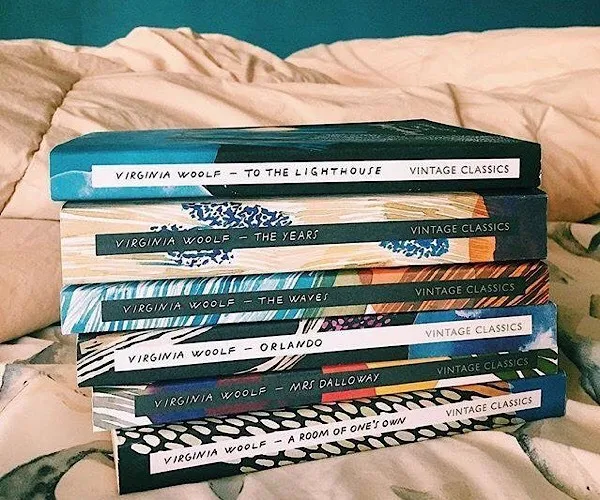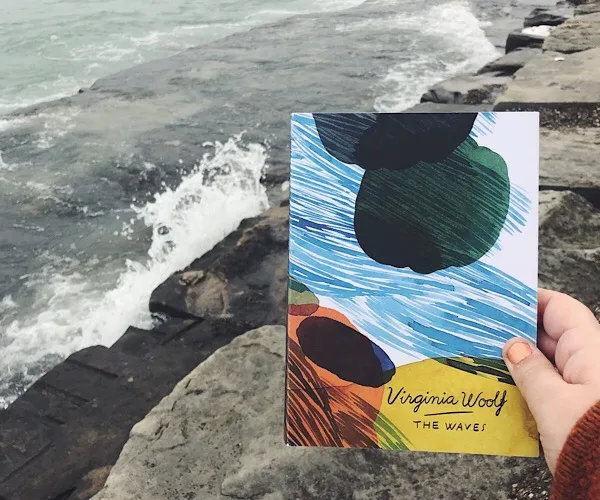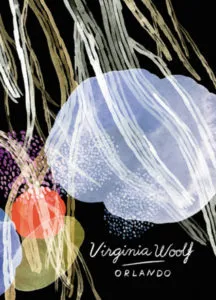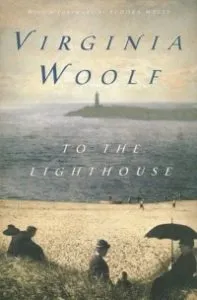
Reading Pathways: Virginia Woolf Books
This content contains affiliate links. When you buy through these links, we may earn an affiliate commission.
Virginia Woolf is not the easiest author to get into. Her works are heavy on imagery, and she often utilizes stream of consciousness to bury the reader in a flood of thoughts and emotions, which can be tough to deal with. But her works are beautiful and necessary classic works, many of which host queer characters, and many of which cope with gender roles and mental illness. So I’ve put together this small guide to help you ease into Woolf’s fiction, and to show you where to start with Virginia Woolf books.

Most people would start you off with Mrs Dalloway. Woolf’s novels can be daunting, and many readers (including myself), assume before reading her work that she is a stuffy old lady writing about stuffy old stuff. But in Orlando, Woolf devastatingly satires gender roles and gives a shockingly clear and vivid portrait of a shift in gender identity. Orlando goes to sleep one night a man and wakes up a woman: Woolf walks the reader through the shift in pronouns from he to they to she, and then leaves it to the reader to decide whether this shift is due to magic or simply due to how Orlando presents herself. (Woolf had a genderfluid lover named Vita Sackville-West, and so it’s likely she had very complex ideas around Orlando’s transformation.)
Orlando is exactly the same as the day before, but is a woman. In the narration of one day, Woolf shows us how the way that Orlando is treated based purely on presentation of her gender then changes the way Orlando acts, pulling apart the idea that gender roles are biologically ingrained—the idea that women are born more shy or docile, for example—and instead emphasizing the point that these roles are taught by society and then internalized.
When I read this book, I was gobsmacked. Woolf’s work was much more daring than I had ever assumed, and I was blown away by how many issues she tackled, how far she went. It is a beautiful book that will introduce you to Woolf’s writing on a more straightforward bent than in her other books, and will also show you how daring Woolf was for her time on dealing with queer issues and gender roles.
Many Woolf fans consider this their favorite of her works, and for good reason. The novel centers on the visits of the Ramsey family to the Isle of Skye in the 1910s, and focuses on many different protagonists. It is a bridge between Mrs. Dalloway and The Waves: Woolf uses a series of visual and emotional impressions to craft meaning. It is a beautiful novel that touches on the themes of motherhood and human relationships—in many ways, the book is autobiographical, as Woolf drew inspiration from the relationship of her own parents and how it evolved during her family’s trips to Skye.
I feel To the Lighthouse holds the quote that best summarizes Woolf’s purpose in her unique style, when Woolf has a painter protagonist wonder: “What is the meaning of life? That was all—a simple question; one that tended to close in on one with years, the great revelation had never come. The great revelation perhaps never did come. Instead, there were little daily miracles, illuminations, matches struck unexpectedly in the dark; here was one.” This excellently points to Woolf’s hopes with her experimentation and style: the idea that life cannot be neatly summarized, but that its meaning and tone is best given through these small moments and flares, given all together in a series.

The Best Virginia Woolf Books

 Orlando
Orlando
Most people would start you off with Mrs Dalloway. Woolf’s novels can be daunting, and many readers (including myself), assume before reading her work that she is a stuffy old lady writing about stuffy old stuff. But in Orlando, Woolf devastatingly satires gender roles and gives a shockingly clear and vivid portrait of a shift in gender identity. Orlando goes to sleep one night a man and wakes up a woman: Woolf walks the reader through the shift in pronouns from he to they to she, and then leaves it to the reader to decide whether this shift is due to magic or simply due to how Orlando presents herself. (Woolf had a genderfluid lover named Vita Sackville-West, and so it’s likely she had very complex ideas around Orlando’s transformation.)
Orlando is exactly the same as the day before, but is a woman. In the narration of one day, Woolf shows us how the way that Orlando is treated based purely on presentation of her gender then changes the way Orlando acts, pulling apart the idea that gender roles are biologically ingrained—the idea that women are born more shy or docile, for example—and instead emphasizing the point that these roles are taught by society and then internalized.
When I read this book, I was gobsmacked. Woolf’s work was much more daring than I had ever assumed, and I was blown away by how many issues she tackled, how far she went. It is a beautiful book that will introduce you to Woolf’s writing on a more straightforward bent than in her other books, and will also show you how daring Woolf was for her time on dealing with queer issues and gender roles.
Mrs Dalloway
Next comes this short, famous novel. Many find it difficult; it’s also short, and well-covered in online guides that can help you if you get confused, and that’s why it’s next. It introduces you to Woolf’s stream of consciousness and imagery, showing you how she uses this moment-by-moment stream to communicate a day to the reader, to show you the flow of the day from one to the next, and how she uses her methods to stir emotion and identification with the characters. This is such a great introduction to her work because it is short, making it more bearable for someone who isn’t sure how to start her writing, and will get you used to her sometimes complicated-to-follow writing. To the Lighthouse
To the Lighthouse
Many Woolf fans consider this their favorite of her works, and for good reason. The novel centers on the visits of the Ramsey family to the Isle of Skye in the 1910s, and focuses on many different protagonists. It is a bridge between Mrs. Dalloway and The Waves: Woolf uses a series of visual and emotional impressions to craft meaning. It is a beautiful novel that touches on the themes of motherhood and human relationships—in many ways, the book is autobiographical, as Woolf drew inspiration from the relationship of her own parents and how it evolved during her family’s trips to Skye.
I feel To the Lighthouse holds the quote that best summarizes Woolf’s purpose in her unique style, when Woolf has a painter protagonist wonder: “What is the meaning of life? That was all—a simple question; one that tended to close in on one with years, the great revelation had never come. The great revelation perhaps never did come. Instead, there were little daily miracles, illuminations, matches struck unexpectedly in the dark; here was one.” This excellently points to Woolf’s hopes with her experimentation and style: the idea that life cannot be neatly summarized, but that its meaning and tone is best given through these small moments and flares, given all together in a series.



 Orlando
Orlando To the Lighthouse
To the Lighthouse






